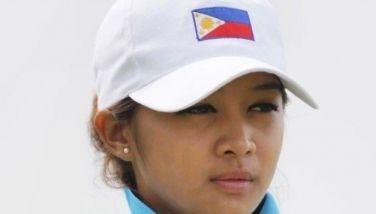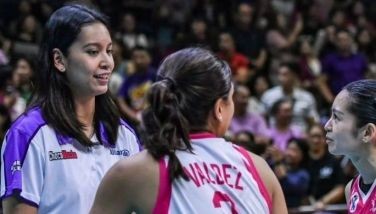UAAP reverses timeout trend

In the NBA, the trend is to decrease the maximum timeouts in a game so there is more fan engagement and less interruptions in the level of excitement. In the UAAP, it’s the reverse and the reason is simply commercialism.
Believe it or not, a 40-minute basketball game in the UAAP can now extend to as long as two hours and 30 minutes. That’s because of a new rule stipulating four mandatory timeouts per half aside from what the opposing teams call. The mandatory timeouts for TV are set with six minutes to go in a quarter and three minutes left in the same 10-minute period.
Each team is allowed two timeouts in the first half and three in the second. So the maximum timeouts in a contest are a total of 18. Last season, the maximum timeouts were 14 as there were only four mandatory timeouts a game, two in each half. In the NBA and PBA, there are full timeouts and less than full timeouts.
In the PBA, a full timeout is 90 seconds and a less than full timeout is 30 seconds. In the Finals, a full timeout is stretched to 120 seconds to allow for more commercials. A mandatory timeout is called only when a team doesn’t call its own timeout. If a team calls its own timeout, then a mandatory timeout isn’t called. The maximum timeouts in a PBA game are 18 or nine per team broken down into six 90-second and three 30-second timeouts. The UAAP has now raised its maximum to the PBA level.
In the NBA starting this season, the maximum timeouts will decrease from 18 to 14 and during the last three minutes, a team will be allowed only two timeouts from the previous three in the last two minutes. Each team will now be allocated seven timeouts per game with no restrictions in a half. Full timeouts will be reduced from 90 seconds to 75. There will be no more 20-second timeouts which were actually 60 seconds. All timeouts will now be 75 seconders.
Each period will allow for two mandatory timeouts, first under the seven-minute mark and the second, under the three-minute mark. The mandatory timeouts will be called only if the teams don’t call their own timeouts. “These changes will help us fulfil our goal of improving game flow and pace of play,” said NBA president of league operations Byron Spruell. “Fewer stoppages and less time without action, especially at the end of a game, will further enhance the viewing experience for our fans.”
The excessive timeouts in the UAAP are not related to enhancing the game experience either for players or fans. They’re strictly for a commercial purpose. Let’s face it. It’s basketball where the UAAP is able to generate maximum media mileage and revenues. So the justification in milking it dry is to build a funding base for the other sports. Unfortunately, it’s at the expense of the integrity of the game.
Mandatory timeouts in the UAAP aren’t charged to any team unlike in the PBA or NBA. They’ll come within stipulated time marks in a quarter, regardless of what’s going on. A team may be in the middle of a streak, either upward or downward, when a mandatory timeout is called. There is no relevance to the progress of a game with a mandatory timeout.
A UAAP coach said a mandatory timeout has its good and bad points. “It gives a team with a not-so-deep bench more time to rest players but it’s a disadvantage to a team that builds momentum,” he said. For fans in the venue, there’s now more time to go to the restroom or check out what’s available in the food and drink booths. They’ll be in the stadium longer than usual. As for TV viewers, they’ll have to sit through a lot more commercials which may be tolerable for some but not for others.
* * * *
On another issue, the newly-constituted UAAP Board of Trustees, made up of presidents of each member school, has finally ruled to bury the Ben Mbala two-year residency requirement for foreign athletes. Before the presidents formed the Board, the UAAP dictated policies through representatives of each school, now known as the Board of Managing Directors. Those representatives voted to extend the residency requirement in a school for a foreign athlete from one to two years to delay Mbala’s eligibility. It was a blatant act of retaliation on La Salle for supporting the two-year residency requirement on Koko Pingoy for leaving FEU high school to join the Ateneo seniors. The other schools backed Ateneo’s initiative against Mbala because they benefited from the delay. An initiative led by Sen. Pia Cayetano later killed the UAAP rule of forcing residency on a player who’s a fresh high school graduate moving to another college.
Now, the Board of Trustees has ended the Mbala rule which was unfair from the start. The Board of Managing Directors had previously ruled UST’s Steve Akomo of Cameroon and UP’s Ibrahim Ouattara of Mali ineligible because they had served only a year of residence in their schools. This means Bright Akhuetie, now serving his first year of residence at UP, will be eligible to play next season.
The Board of Trustees, however, upheld the Managing Directors’ decision to rule Fil-Am Rob Ricafort of UP ineligible because of the age limit. Under the UAAP rules, a player is eligible only if is no more than 25 years old by the end of the league schedule for all sports. Ricafort served out a year of residency and is eligible only for one season in the UAAP but his dream of playing for UP was shot down. He’ll still be 24 by the time the basketball season ends in December so what’s the big deal? Ricafort turns 25 in January. The decision wasn’t only painful but also heartless.
- Latest
- Trending





























